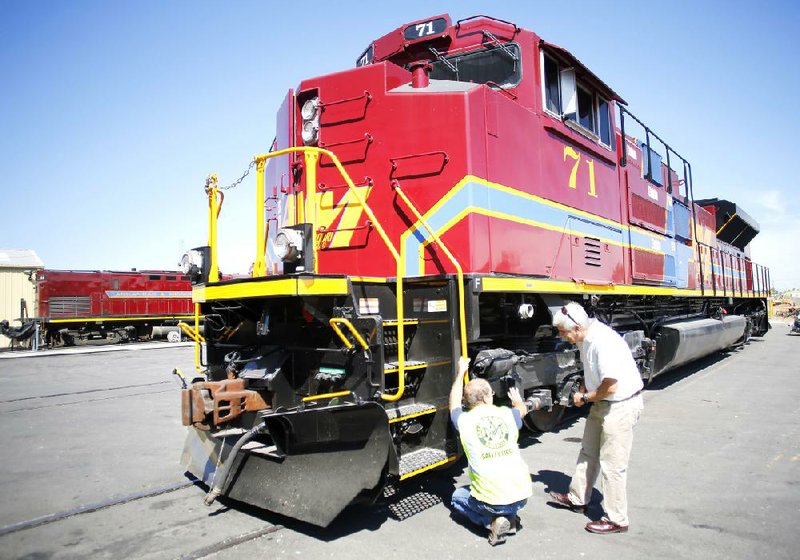SPRINGDALE -Arkansas & Missouri Railroad is investing about $10 million in improvements this year, including the purchase of three new locomotives, the first new ones in the line’s 27-year history.
The railroad’s chairman, Reilly McCarren, said improvements will also include a 60,000-square-foot warehouse, as well as upgrades to tracks, bridges and maintenance facilities.
“We’re always doing a lot,” McCarren said. “We’re always trying to make sure the railroad is positioned to provide the best possible service we can to this area of the country. We’re continually investing.
“But this is a huge year for us.”
Railroad officials, who unveiled the new locomotives Friday in Springdale, declined to give a specific purchase price but said each unit cost “well north of $2 million.” Spending is not an extravagance for the short line operation, which services construction, food service and industrial clients located in a stretch of about 150 miles between Fort Smith and Monett, Mo. One of the units being replaced is 50 years old this year.
Those new engines will save an estimated 150,000 gallons of fuel in a year’s time. At the current price of $3.23 per gallon of diesel fuel, that would be close to $500,000 saved. Chief mechanical officer Casey Shep-herd said the new locomotives will allow for cuts in man hours and maintenance costs, while improving the speed of delivery.
“Fuel savings, maintenance savings, the customer service will be tremendously better,” Shepherd said. “Any glitch with one of those old units could cause you almost an hour delay on the mountain.
“With these three right here, they come right on up with no problems. We’ll get the product to our customer a whole lot quicker.”
Using the railroad allows, in many cases, larger quantities of product to be shipped at one time.
Beaver Lake Concrete in Springdale uses the railroad for the delivery of sand. Each rail car hauls between 80 tons and 110 tons, compared to the approximately 22-ton capacity in a single truck. Beaver Lake Concrete general manager Fred Vernor said the company is currently using between 2,000 and 2,500 tons of sand per week and uses the railroad to move the product between Van Buren and Rogers.
“For every one rail car, you’d have to line up four cars,” Vernor said. “You need a little additional planning, but you just order ahead. It allows us to get much more at once.”
Shipping the 10 million carloads of freight moved annually by short-line railroads would require more than triple the amount of fuel via truck, according to the American Short Line and Regional Railroad Association.
McCarren said the yearly capital investments are critical to allowing local businesses to move lots of product for cheaper than the cost of over-the-road trucking.
The company had considered purchasing new locomotives for at least a year but decided against the expense until very recently. Last year’s expenses included a new locomotive terminal for whenever the company could afford new ones.
“With a small company like us, it’s always a matter of prioritization,” McCarren said. “There were other things that we felt were more pressing matters. When we looked at it this time, as the maintenance costs for the older engines continued to increase, fuel costs continued to increase, the economics were pretty compelling.”
Business, Pages 31 on 09/14/2013
